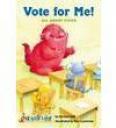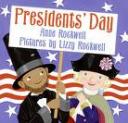Summary:
“B is for Butterfly Fish, C is for Camouflage, D is for Dolphins.” The ABCs of Oceans by Bobbie Kalman is a half dictionary, half storybook that provides children and adults about the different types of animals and plants that thrive in the spectacular world beneath the ocean. I absolutely adore the ocean and with this book, myself and anybody else who picks it up will learn that there is a lot more beneath the ocean than people think. The book talks about common sea creatures like whales, dolphins, sharks and sea turtles but it also provides definitions and ocean facts as well. Who knew that such creatures as “Nudibranchs” and “Leafy Sea Dragons” actually existed? (“Nudibranchs are mollusks” and “The leafy sea dragon is a relative of sea horses.”) This book is an amazing 32 pages of facts about sea life and is the perfect book for any ocean lover to pick up and read.
Curriculum Connections:
This book provides young children with a lot of information about ocean animals but it also helps students understand relationships among plants and animals in an aquatic environment. The book talks about how some animals in the ocean are predators/consumers and how others are prey. But the book also does a phenomenal job in classifying ocean animals and plants as well. It talks about how animals are classified as things like cartilage fish, mollusks, mammals, plants, etc. It also provides students with a brief glance into parents, babies and offspring and how usually the offspring aren’t identical to their parents. Overall, the book provides lots of information about ocean animals and plants but it does so in a fun way that is enjoyable to learn (Virginia SOLs LS 4, 5, K.6, 1.5, 3.5 and 3.6)
Additional Resources:
Ocean ABCs: This website will provide children with the opportunity to create their own ABC book of the oceans. Each student will contribute something different for one letter of the alphabet and the finished product will be a masterpiece.
Ocean Activities for Kids: With this website, teachers and students will get the chance to construct numerous ocean animals using simple art materials. A fun and wonderful way to learn about what lies beneath the ocean.
Ocean Alphabet Pages: These fun color printout pages are a must for children who enjoy coloring and are also a great learning tool for teachers to hand out to their students in order to provide a more interesting look at the glorious animals that dwell in the ocean.
General Information:
Book: The ABCs of Oceans
Author: Bobbie Kalman
Publisher: Crabtree Publishing
Publication Date: 2007
Pages: 32
Grade Range: K-2
ISBN: 0778734323









